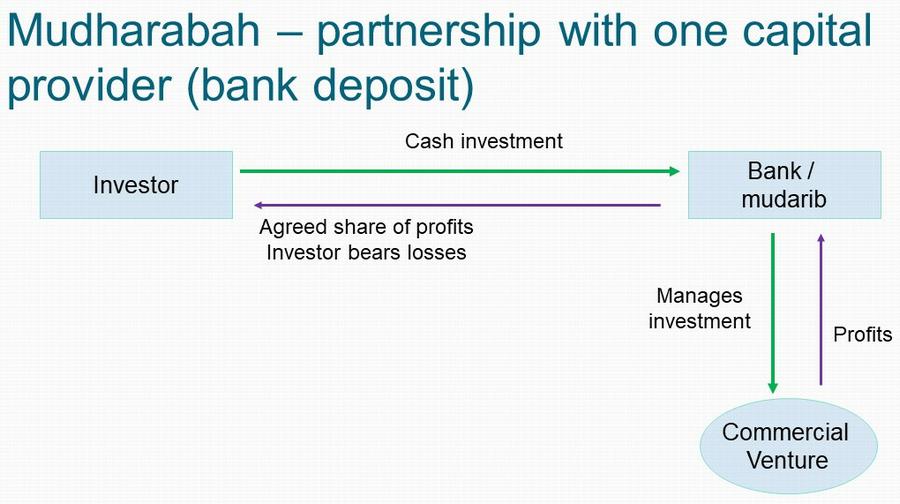 MohammedAmin.com
MohammedAmin.comSerious writing for
serious readers
There is no easy answer. To decide on the accounting treatment one needs to consider the economics of the arrangement in detail.
Posted 12 September 2021
My August 2021 column in the magazine "Islamic Finance News" shared some of the tangential thoughts I had after attending an AAOIFI Roundtable on planned revisions to its Financial Accounting Standard 1.
For my September column I decided to write about the most interesting technical issue we discussed. That is how Islamic banks should account for profit sharing investment accounts, which have their basis in the classical Islamic partnership structure called mudharabah which is illustrated below.

Such arrangements take many forms, and typically the commercial venture will be a part of the bank's overall business. The question is how they should be accounted for.
You can read my column below.
Broadly speaking, Islamic banks do what conventional banks do, while complying with the requirements of Shariah scholars. The main economic difference is that Islamic banks offer profit-sharing investment accounts (“PSIAs”) where the PSIA’s return is linked to the return on the Islamic bank’s assets.
There is no uniform practice, and PSIAs take many forms. To list just two examples chosen to be at opposite extremes:
Many intermediate scenarios are possible. For example, in the UK the regulatory authority does not allow banks to allocate negative returns to PSIA holders, so PSIA accounts are always repayable in full except in the event of bank insolvency.
Scenario B of course replicates conventional asset management. Conventional banks often act as managers of collective investment schemes, which are structured to ensure that creditors of the asset managing bank have no claim against the scheme assets, which are located in a vehicle owned entirely by the investors.
Conventional banks with asset management businesses almost always disclose in their accounts the total value of such assets under management, since increasing them is normally an important business goal. However, the assets are not included on the conventional bank’s balance sheet, since they do not belong to the bank, either legally or economically.
Conversely, in scenario A my view is that the bank has full legal and economic ownership of the assets, and they clearly belong on the bank’s balance sheet. While the PSIA accounts have the characteristics of a liability, if the bank is legally able to allocate some asset losses to PSIA account holders, that needs proper reporting since it makes the bank’s other liabilities less risky.
Historically, Islamic banks have been very inconsistent in how they report PSIA accounts. Occasionally banks have excluded PSIA accounts from their balance sheet entirely (even in circumstances similar to scenario A), and also excluded an equivalent amount of the bank’s assets from the balance sheet. This of course gives an unrealistically optimistic picture of the bank’s ratio of equity / total assets.
I regard accounting for PSIAs as the most important question addressed in AAOIFI’s (the Accounting and Auditing Organisation for Islamic Financial Institutions) Exposure Draft (F2/2020) v11.5 which I mentioned in my 4 August 2021 column.
At the risk of extreme oversimplification, in circumstances similar to scenario A the PSIA accounts appear on the balance sheet as “quasi-equity” with disclosure in the balance sheet of the amount of assets financed jointly by quasi-equity and the bank’s own equity. Conversely, in scenario B the assets concerned are off balance sheet but with very full disclosure. I regard the overall recommendations as sensible and hope that they are implemented.
Mohammed Amin is an Islamic finance consultant and former tax partner at PwC in the UK.
Follow @Mohammed_Amin